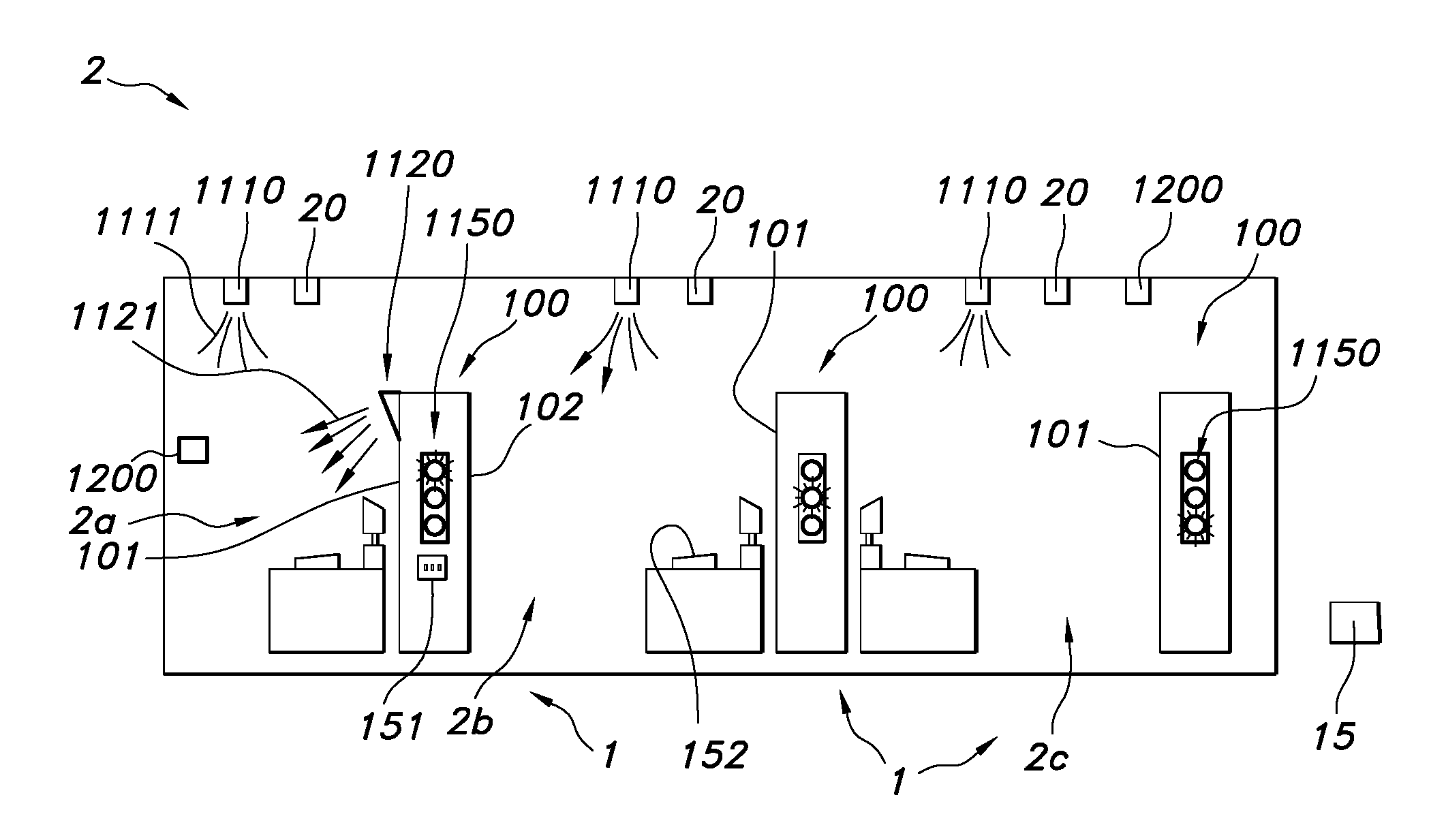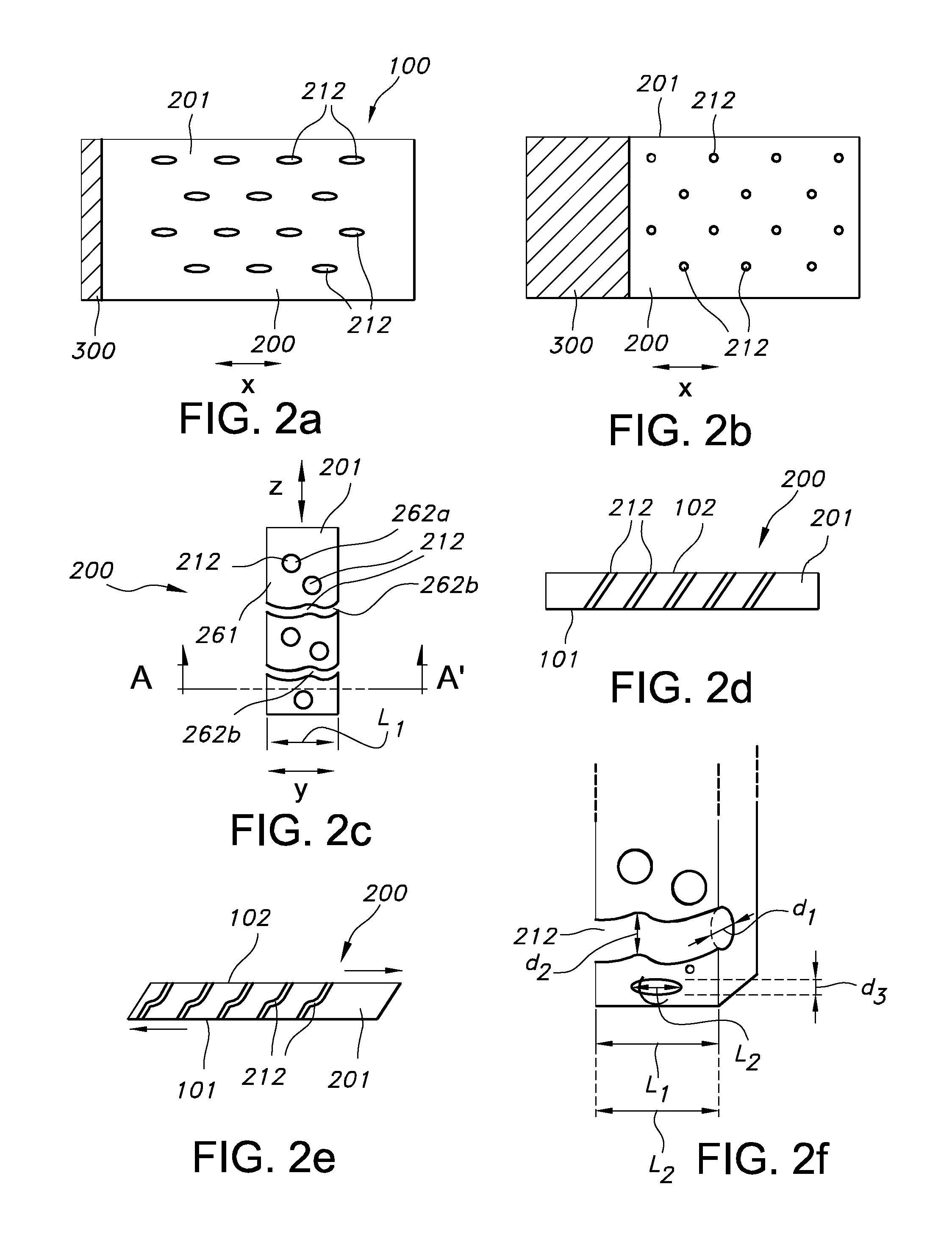System comprising a sound attenuating panel
a technology of attenuating panel and sound, which is applied in the direction of instruments, lighting and heating apparatus, semiconductor devices for light sources, etc., can solve the problems of static, not adapting to changes, and requiring a lot of effort, so as to reduce perceived transparency, reduce perceived transparency, and protect privacy
- Summary
- Abstract
- Description
- Claims
- Application Information
AI Technical Summary
Benefits of technology
Problems solved by technology
Method used
Image
Examples
Embodiment Construction
[0071]FIG. 1a schematically depicts a system 1 comprising the sound attenuating panel 100 as described herein, a control unit 15, and a sensor 20. The control unit 15 may be configured to control a device as function of a sensor signal from the sensor, wherein the device is selected from the group consisting of the sound attenuating panel 100 and another device, such as the further lighting in a space 2, wherein the panel(s) 100 are arranged. Optionally, the control unit may be configured to control one or more of the sound attenuating panels 100 and other device locally. Hence, in such way e.g. sound and or light can be controlled locally, such as indicated with subspaces 2a,2b,2c (which may e.g. cubicles). For instance, the sensor 200 comprises a sound sensor configured to measure sound in a space wherein the sound attenuating panel 100 is applied, configured to provide a corresponding sound sensor signal, wherein the sound attenuation properties of the sound attenuating panel 100...
PUM
 Login to View More
Login to View More Abstract
Description
Claims
Application Information
 Login to View More
Login to View More - R&D
- Intellectual Property
- Life Sciences
- Materials
- Tech Scout
- Unparalleled Data Quality
- Higher Quality Content
- 60% Fewer Hallucinations
Browse by: Latest US Patents, China's latest patents, Technical Efficacy Thesaurus, Application Domain, Technology Topic, Popular Technical Reports.
© 2025 PatSnap. All rights reserved.Legal|Privacy policy|Modern Slavery Act Transparency Statement|Sitemap|About US| Contact US: help@patsnap.com



